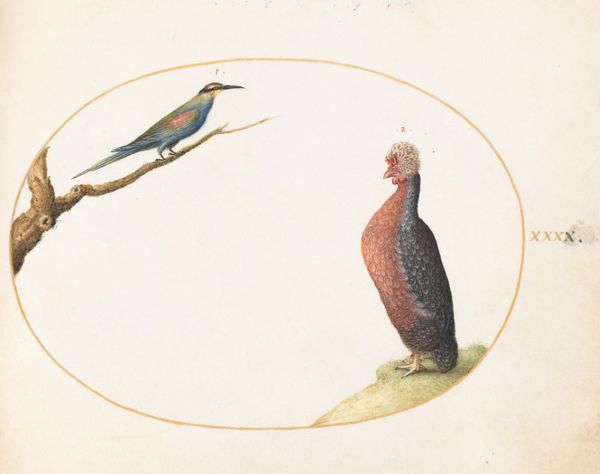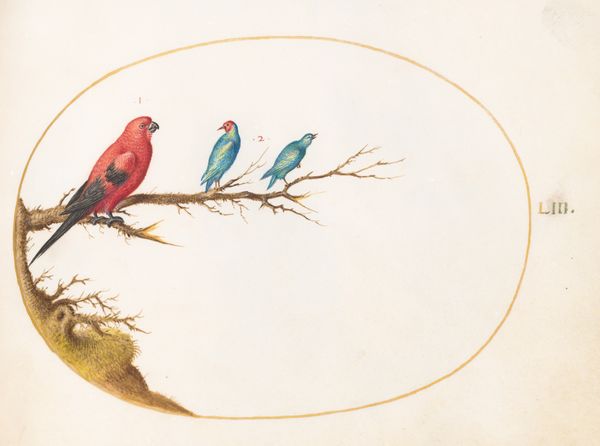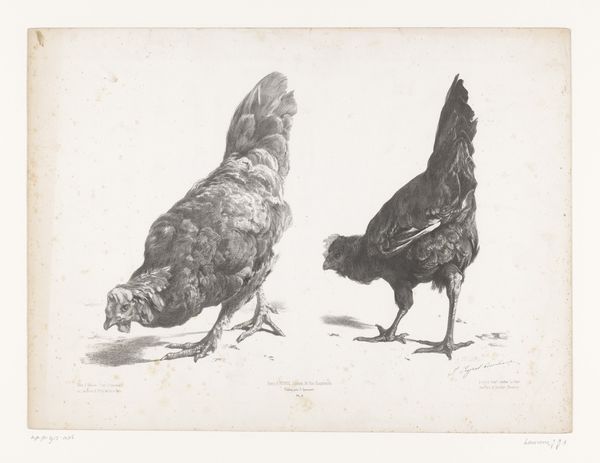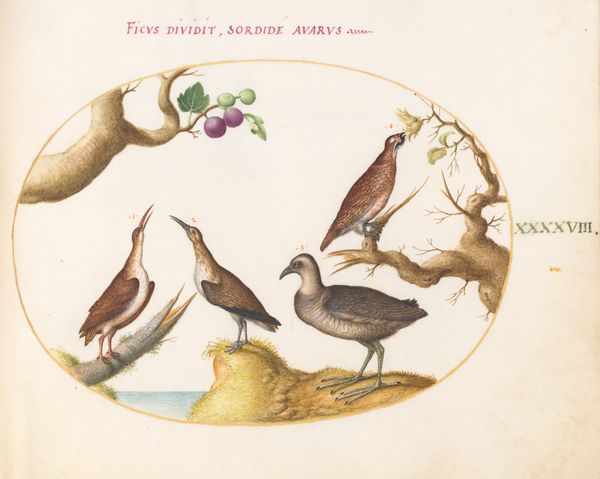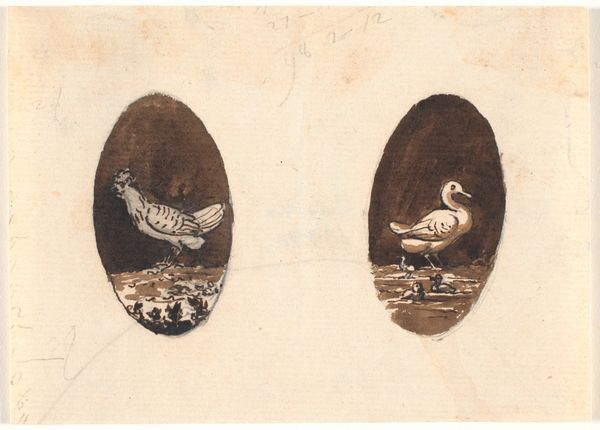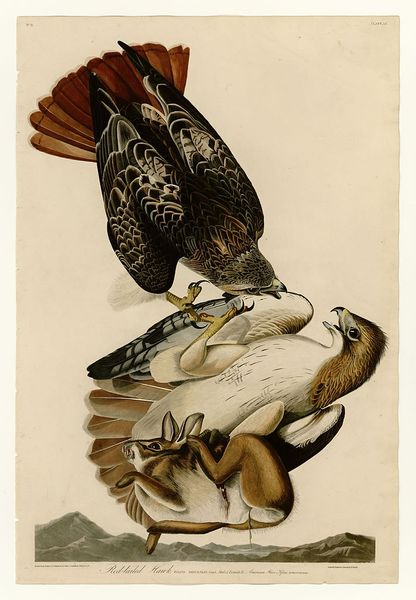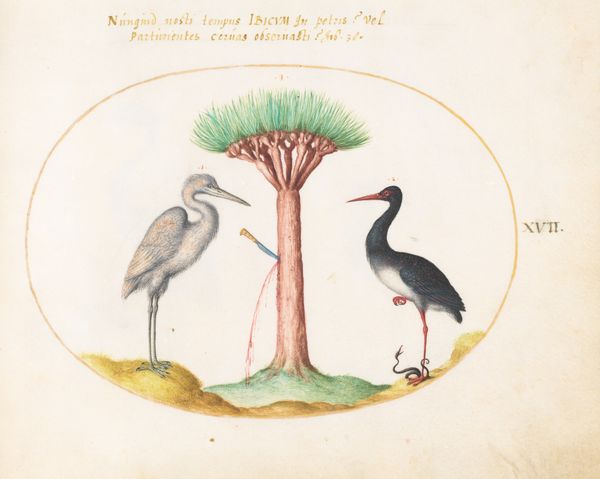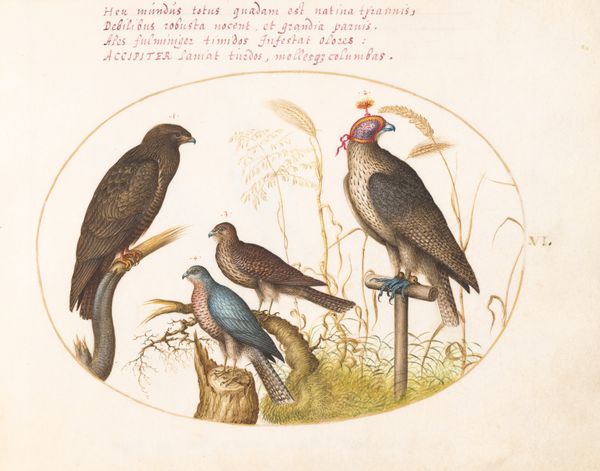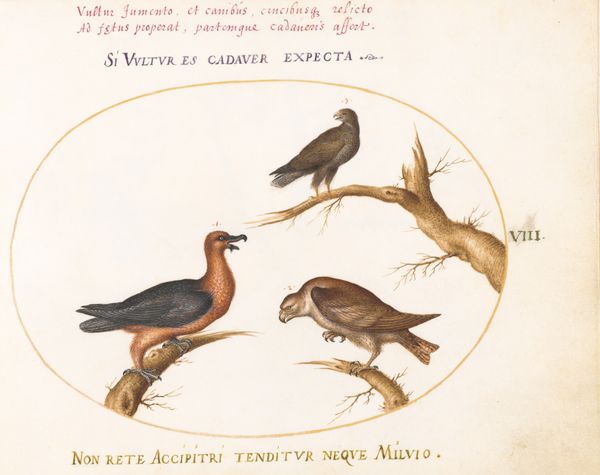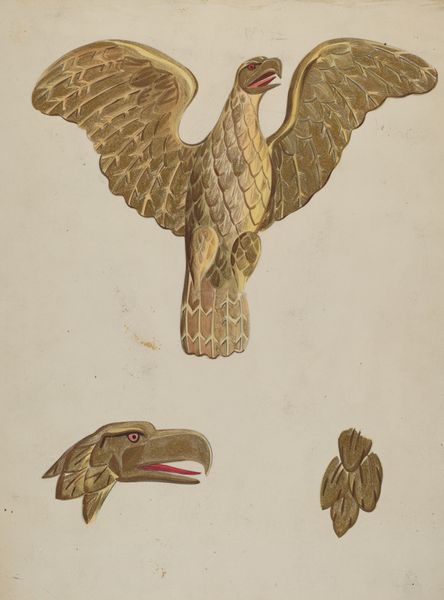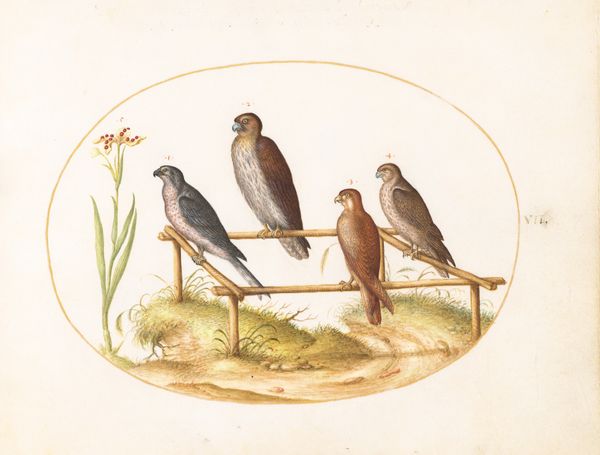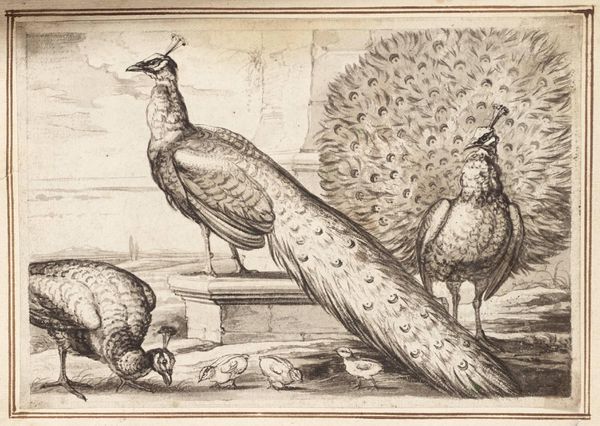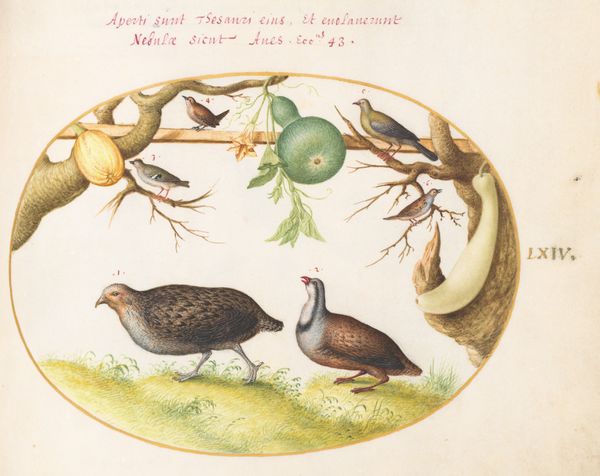
Plate 5: A Hooded Falcon and Its Wild Counterpart c. 1575 - 1580
0:00
0:00
drawing, watercolor, ink
#
drawing
#
animal
#
mannerism
#
watercolor
#
ink
#
pencil drawing
#
coloured pencil
#
watercolour illustration
#
watercolor
Dimensions: page size (approximate): 14.3 x 18.4 cm (5 5/8 x 7 1/4 in.)
Copyright: National Gallery of Art: CC0 1.0
Curator: Joris Hoefnagel’s “Plate 5: A Hooded Falcon and Its Wild Counterpart,” dating from approximately 1575 to 1580, presents us with a fascinating study in contrasts rendered in ink and watercolor. My initial impression is one of restraint and formality, with a hint of underlying tension in the positioning of the birds. Editor: Absolutely. That tension immediately struck me as well. Here we have these two falcons—one hooded, held, and controlled, juxtaposed with another in a state of what appears to be complete natural freedom. I am immediately drawn to the colonial power dynamics at play during this era, a period saturated with falconry as a status symbol among the elite. Curator: Let’s focus on Hoefnagel’s masterful technique, particularly his rendering of texture. Note the meticulous detail in the feathers of both birds, achieved through delicate layering of washes and precise linework. The composition itself, divided neatly in half by this ovoid frame, encourages comparison. Editor: I can't help but wonder how the artist may be using these creatures to express tensions between wildness and civilization. I am compelled to ask: who is really being observed? What social class would commission such a piece? We see that class, power, and identity are inextricably linked within the framework of nature itself. Curator: While I concede those interpretations have validity, I believe we should avoid projecting contemporary readings onto a Mannerist sensibility. The focus on artifice, hyper-refinement, is in evidence throughout the plate. Observe the stylized rendering of the hand; its elegance elevates falconry itself into a type of artform. Editor: I agree that it's gorgeous, but it is the very artifice that demands unpacking! Looking at it, I cannot ignore how practices such as falconry bolstered very specific cultural ideas and the role of nobility within this time period. What were the ethics surrounding the trapping of wildlife for the pleasure of the rich? These illustrations, however pretty, were endorsements. Curator: I appreciate your viewpoint. Still, returning to pure visual elements, Hoefnagel expertly guides the viewer's eye between these paired studies by exploiting color, balance, and tone, culminating in a harmony despite contrasting themes. Editor: In understanding the composition through both art and the socio-political circumstances, we understand more comprehensively its lasting significance and can critically consider falconry, ownership, and our relationship with the environment.
Comments
No comments
Be the first to comment and join the conversation on the ultimate creative platform.
